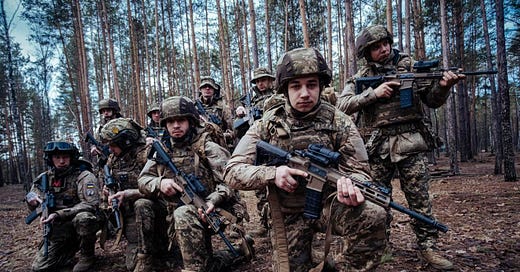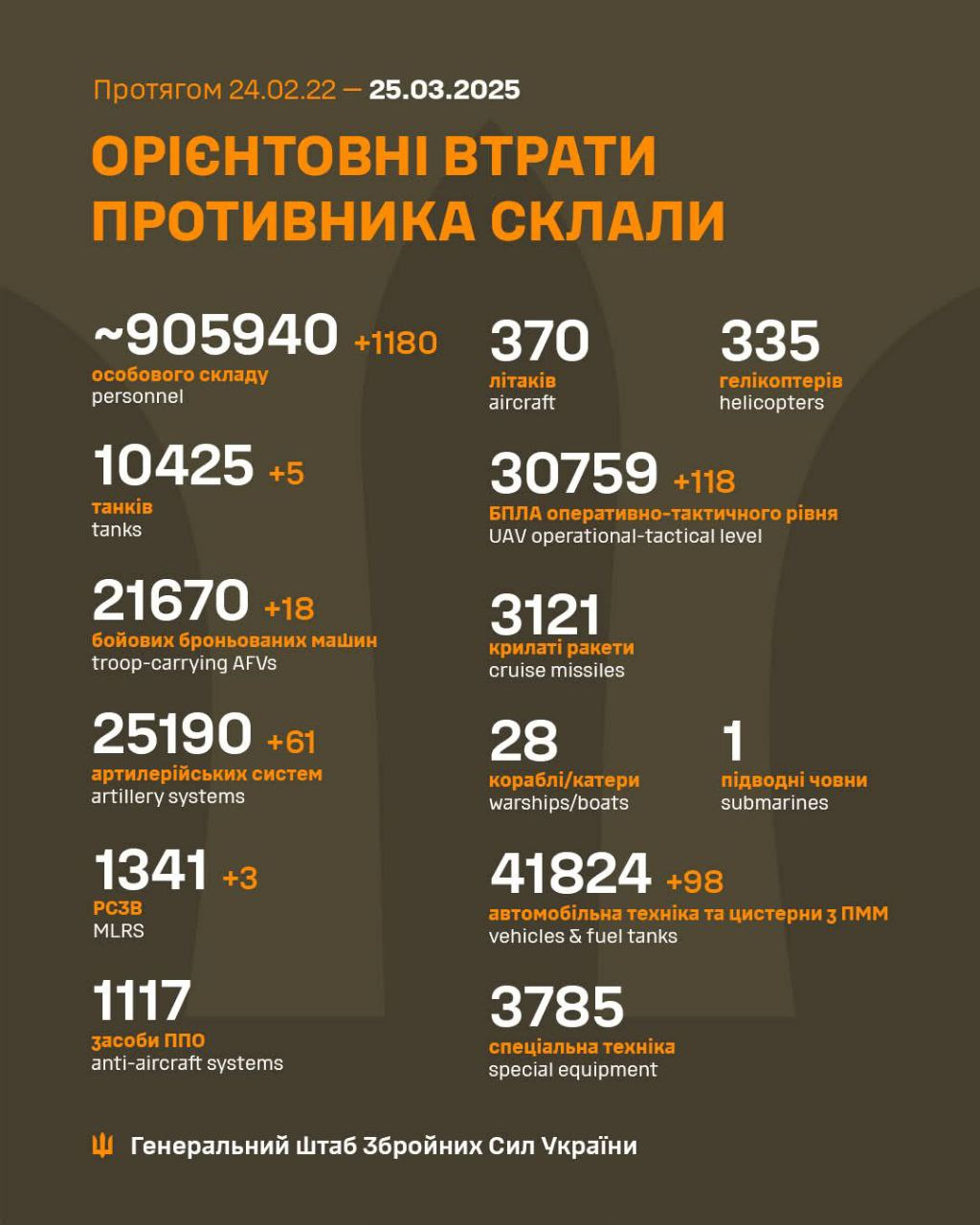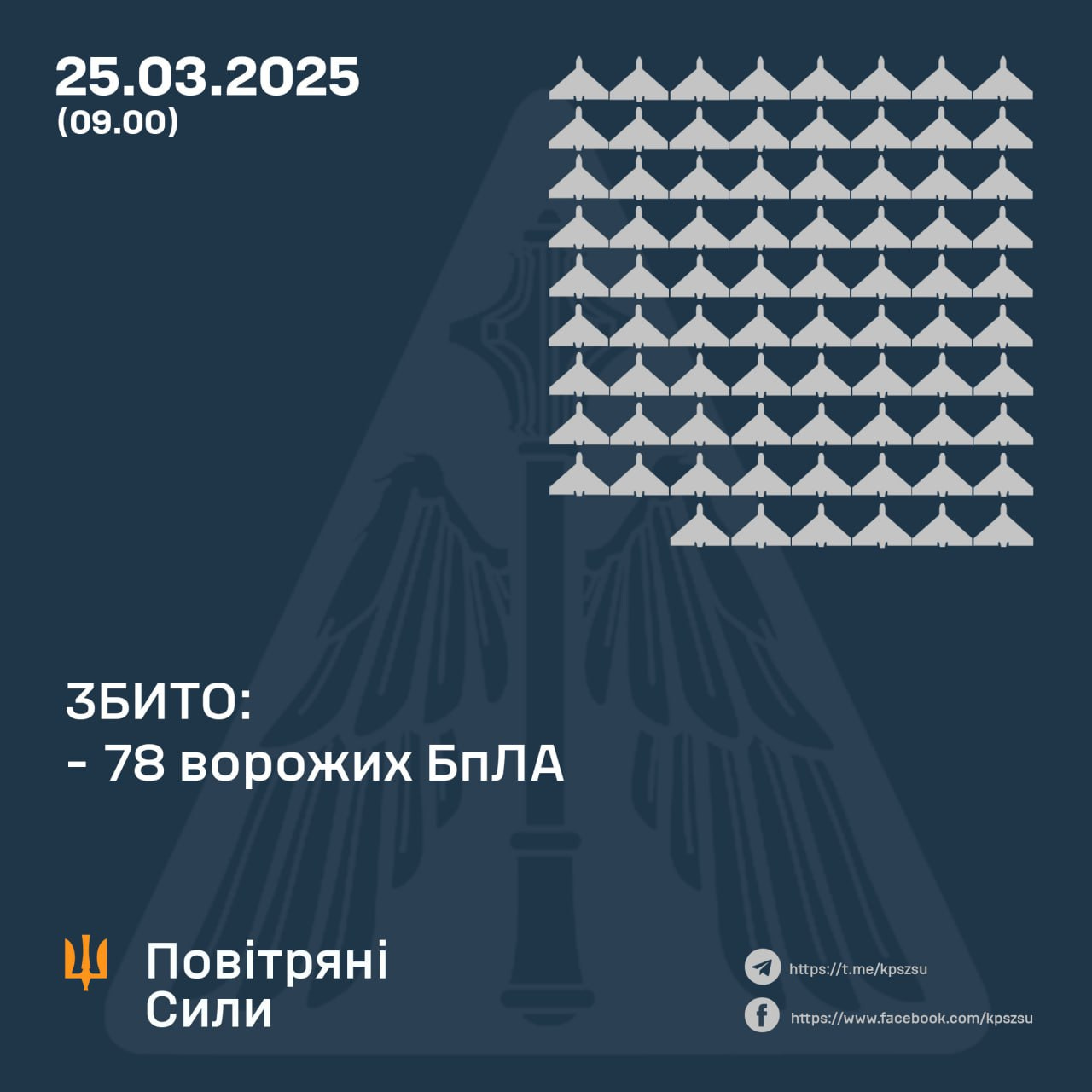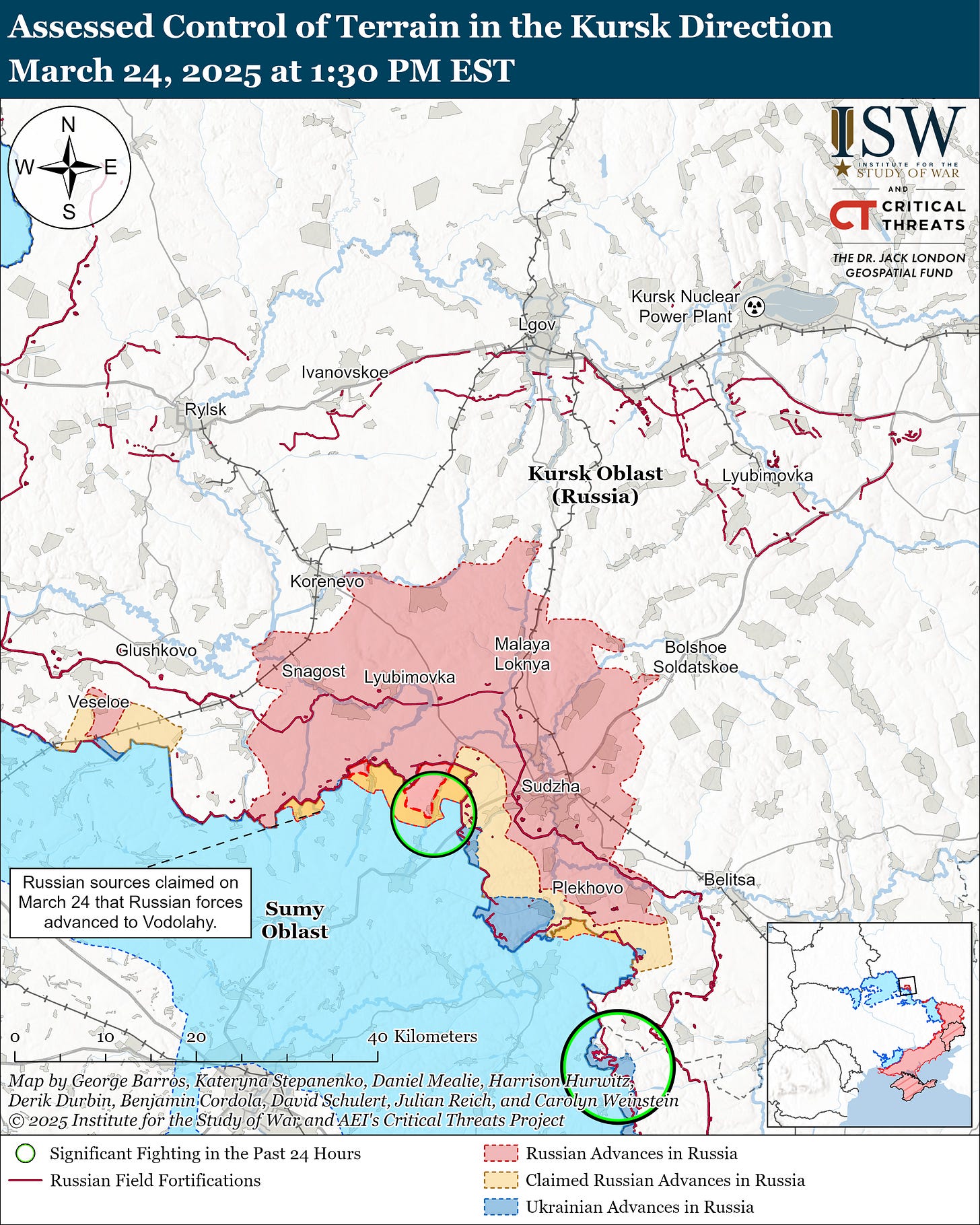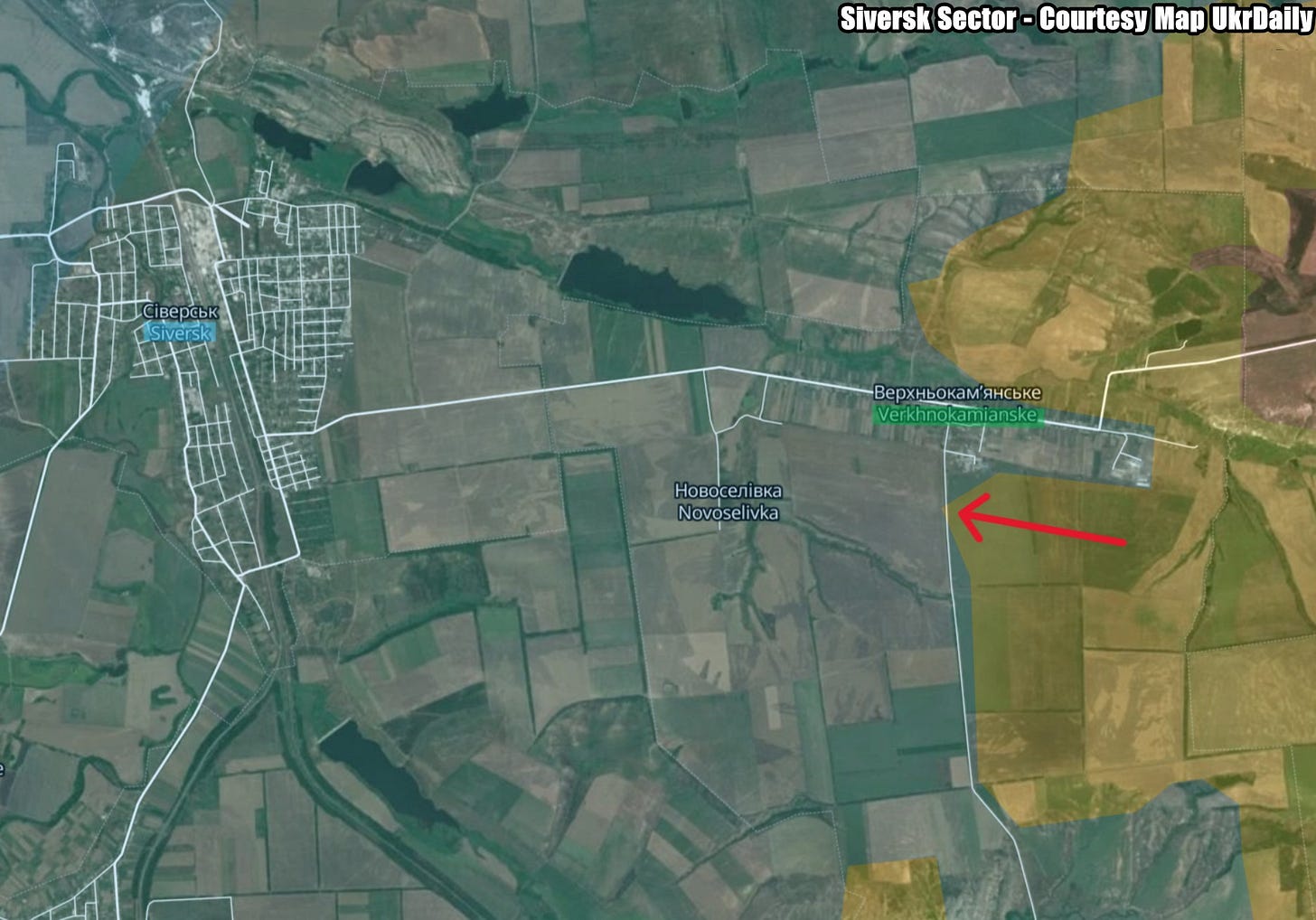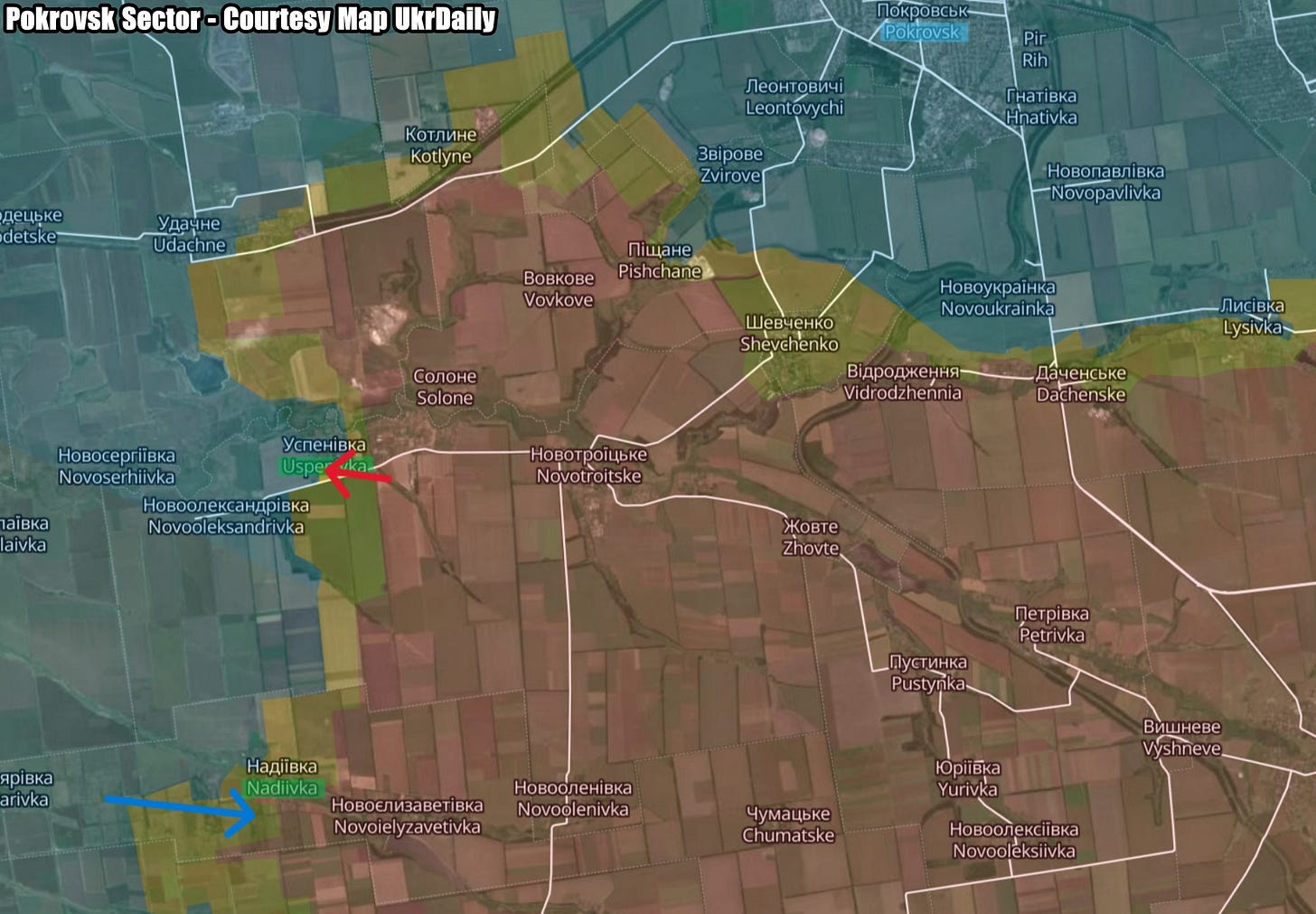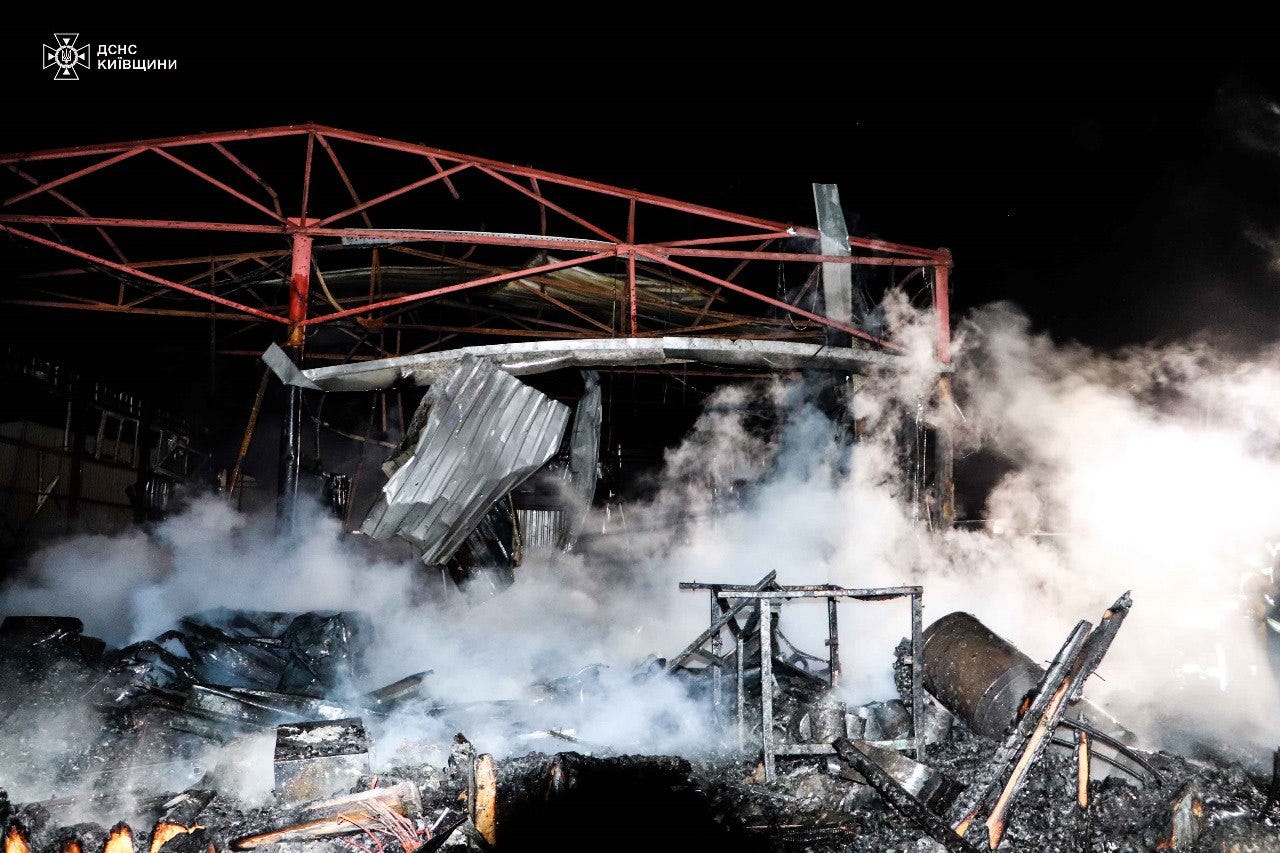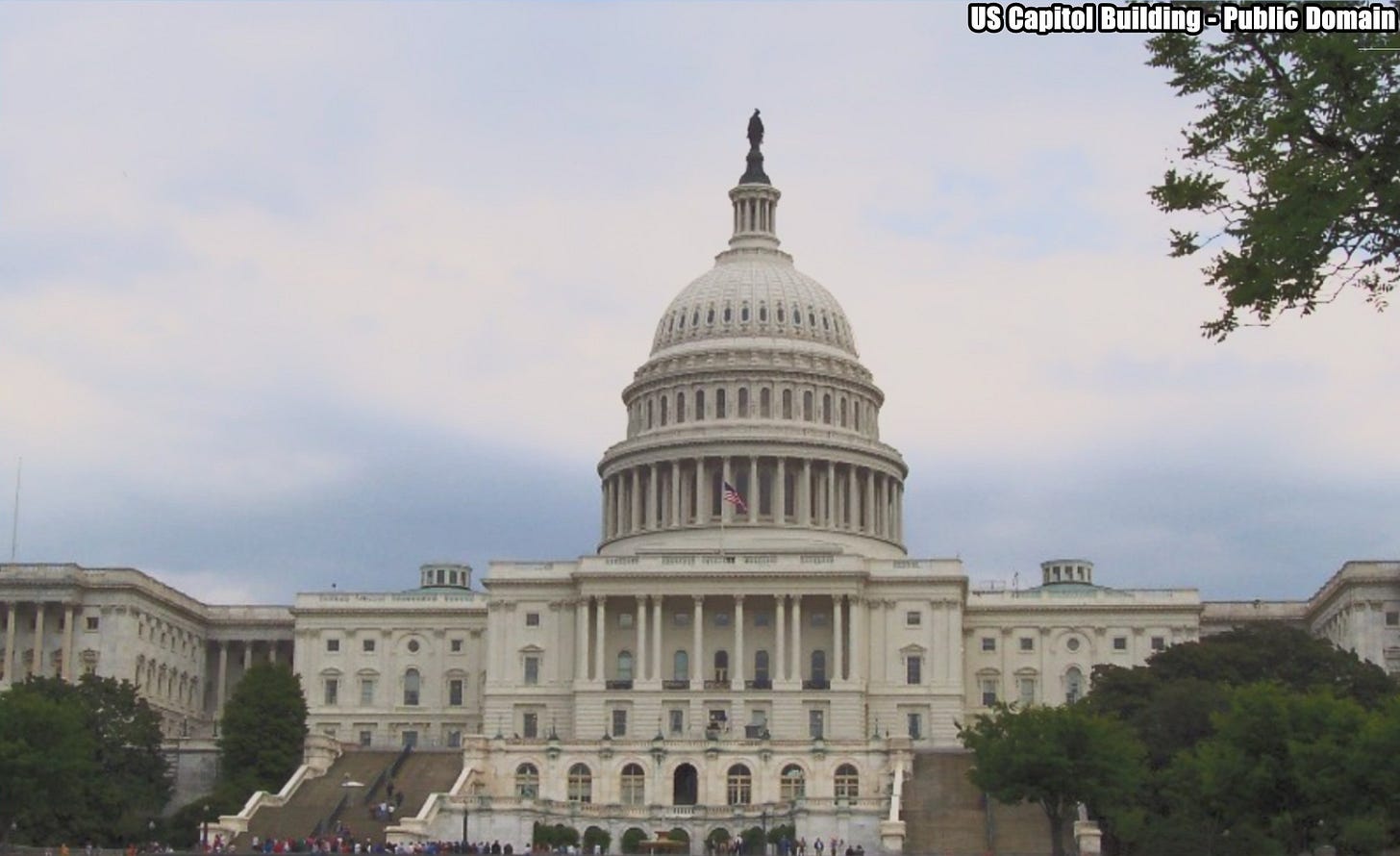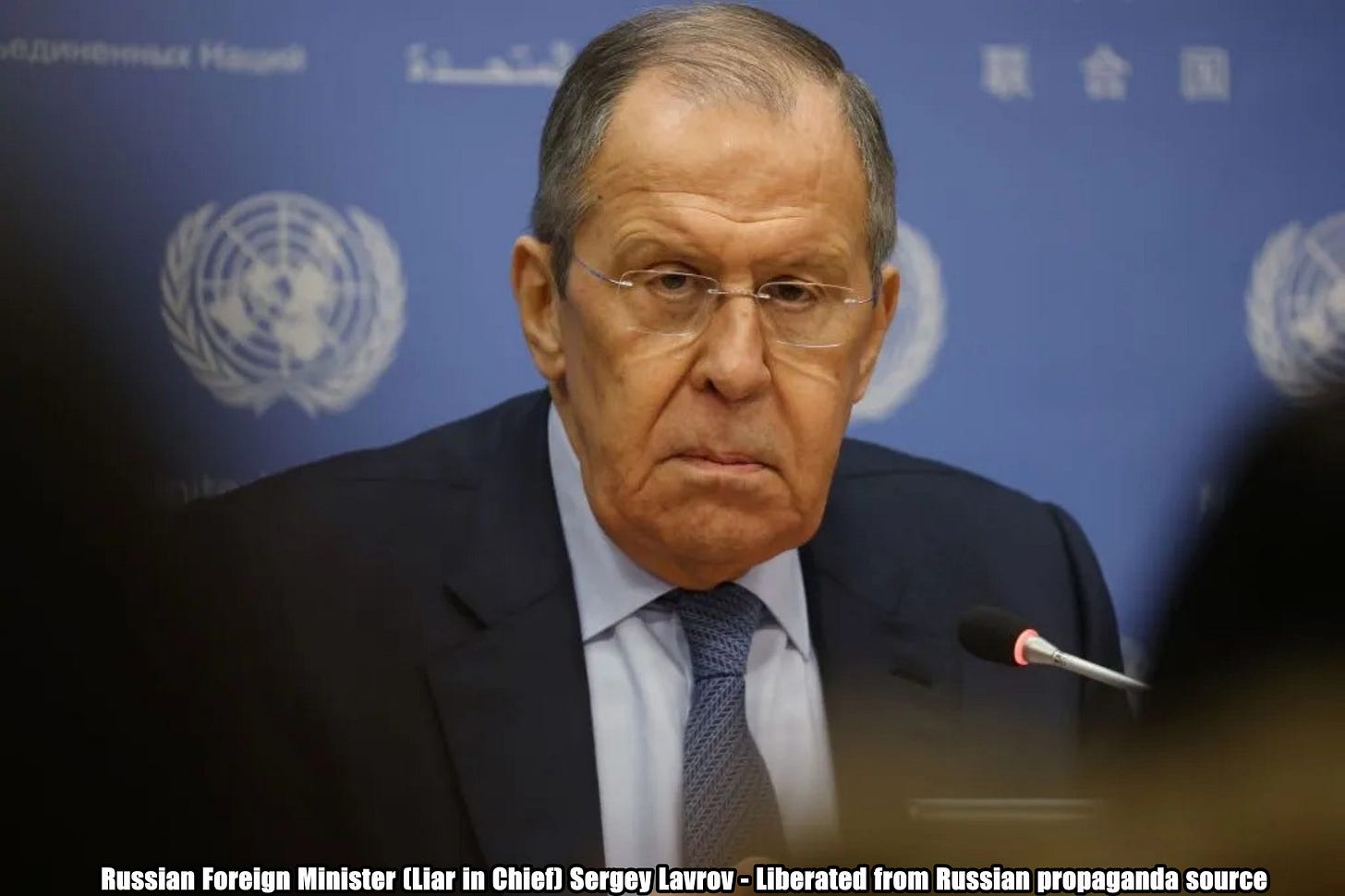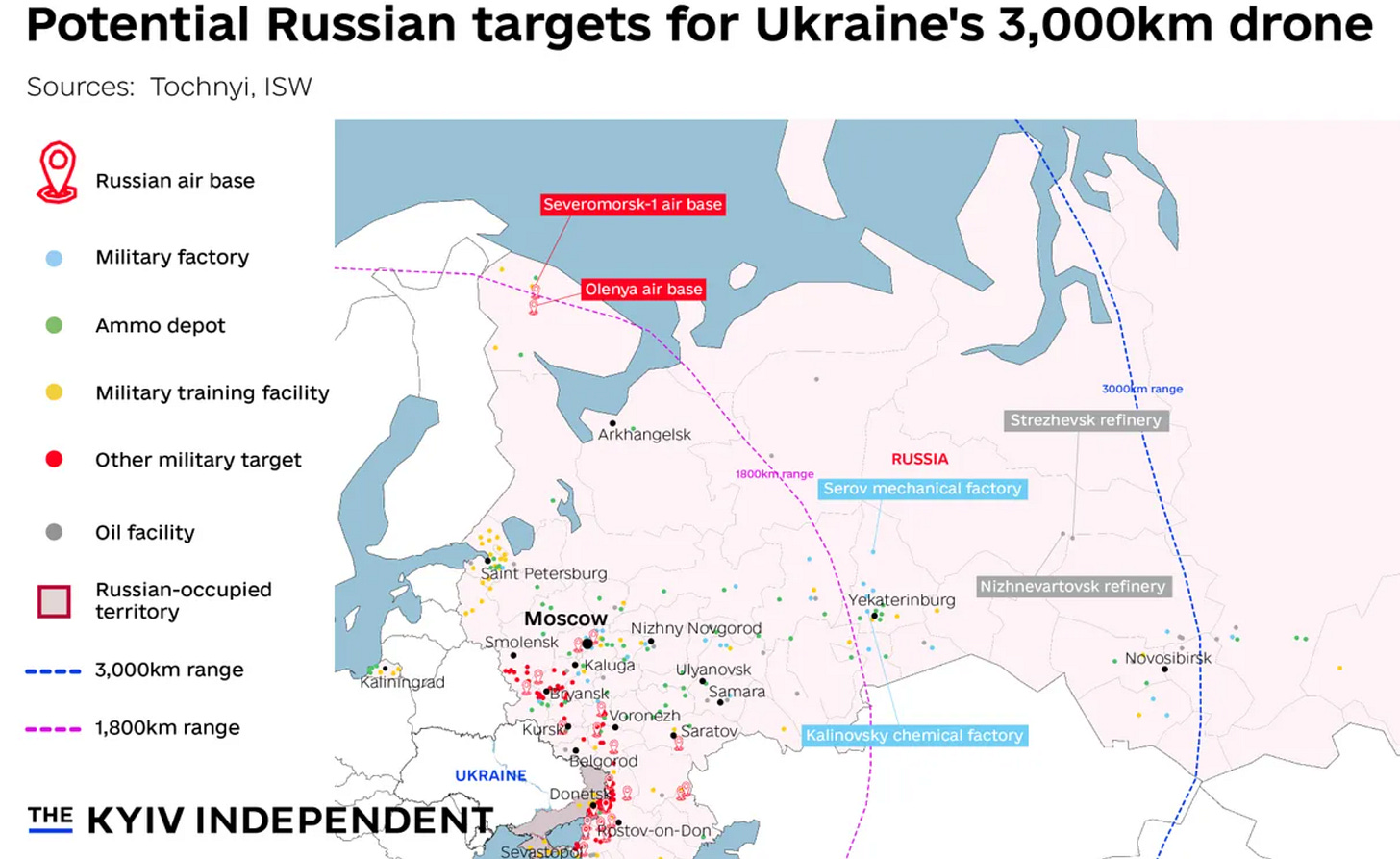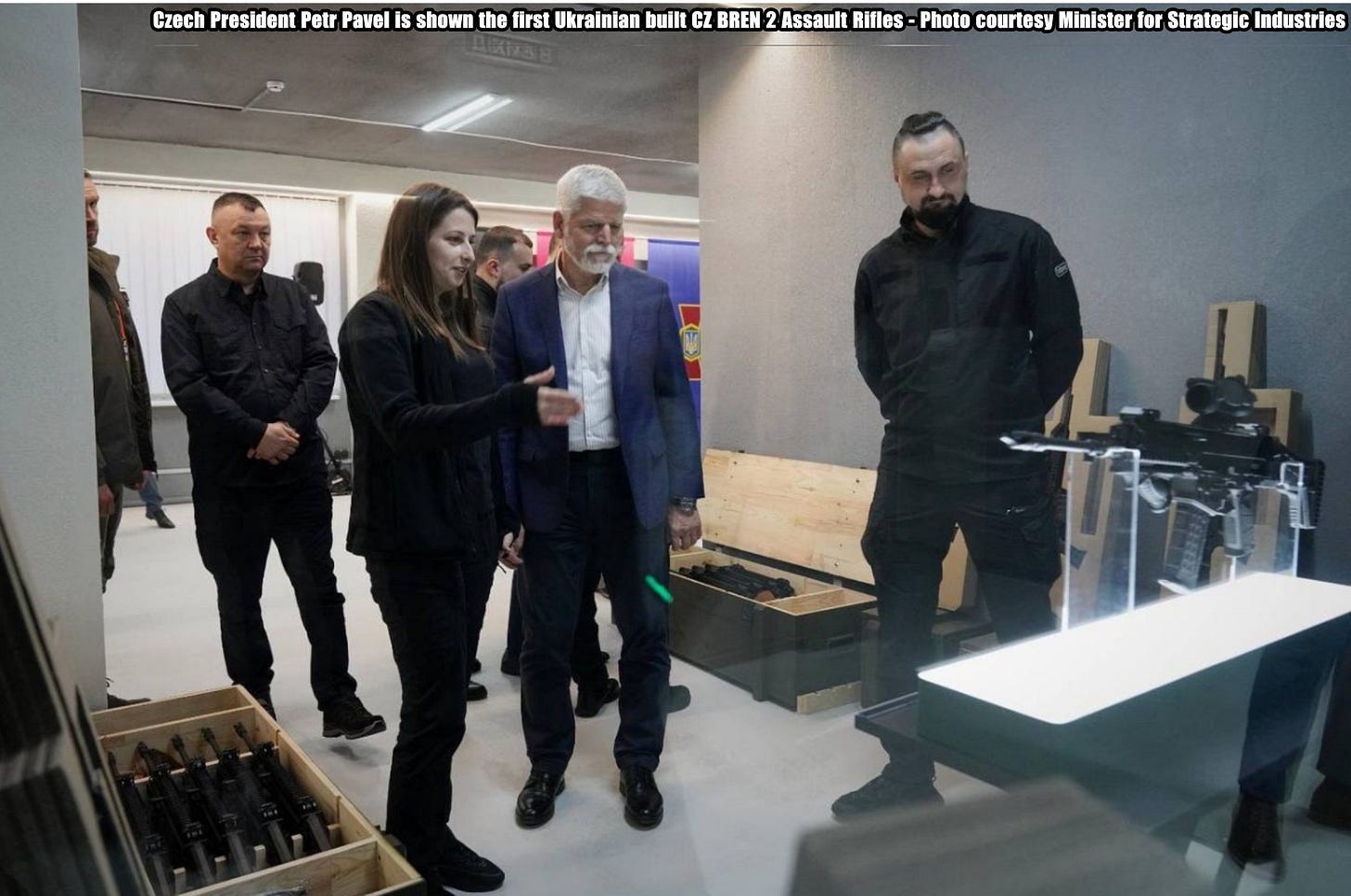Slava Ukraini! In early 2022 I began a Telegram channel aggregating news from a number of sources daily on the war in Ukraine. In June 2023 I began providing a daily draft for the Ukraine War Brief Podcast collecting news from over 70 sources daily, which formed the basis of the script. While the Podcast no longer exists I have continued to make this Brief available for my followers here on Substack for those who wish to keep up with the news from the war.
All the latest news on the Russo-Ukraine War 6 days per week
ALONG THE CONTACT LINE
GSAFU Morning Report
For: Mar 25th, 2025
The General Staff of the Armed Forces of Ukraine in its Operational Information update at 08:00 on Mar 25 stated that day 1126 of the full-scale invasion of the Russian Federation against Ukraine had begun.
The situation on the line of combat remains tense in some sectors. Ukrainian defenders continue to actively counteract the Russian aggressor, causing them significant losses in personnel, equipment and technology. Exhausting the enemy along the entire front line and continuing to disrupt the plans of Russian occupiers to advance deeper into the territory of Ukraine.
During the past day, 165 combat engagements took place.
Over the past 24 hours, the enemy carried out 76 air strikes, used 2640 drones and fired approximately 6260 artillery shells across the positions of Ukrainian forces and civilians.
Air Force Daily Report
78 ENEMY UAVS SHOT DOWN, 34 SIMULATOR UAVS FAILED TO REACH THEIR TARGETS (LOCATIONALLY LOST)
➖➖➖➖➖➖➖➖➖
On the night of Mar 25, 2025 (from 6:00 p.m. on Mar 24), the enemy attacked with an Iskander-M ballistic missile from Crimea and 139 Shahed strike UAVs and simulator drones of various types from the directions: Millerovo, Kursk, Primorsko-Akhtarsk - Russia, Chauda - Crimea.
The air attack was repelled by aviation, anti-aircraft missile troops, electronic warfare units, and mobile fire groups of the Air Force and Defense Forces of Ukraine.
As of 09:00, it has been confirmed that 78 Shahed attack UAVs (and other types of drones) have been shot down in the south, north, and center of the country.
34 enemy drones-simulators - lost in location (without negative consequences).
The Kharkiv, Sumy, Poltava, Kirovohrad, Kyiv, Cherkasy, and Odessa regions were affected by the Russian attack.
Combat Operations in the Russian Federation
The Institute for the Study of War (ISW), a US based think tank, in its Mar 24 Russian Offensive Campaign Assessment reported that:
Kursk Salient: Russian forces continue to attack limited Ukrainian positions in Kursk Oblast on March 24 but did not advance.
Belgorod Incursion: Ukrainian forces recently advanced in Demidovka along the international border in northwestern Belgorod Oblast amid ongoing Ukrainian attacks in the area.
Geolocated footage published on Mar 24 indicates that Ukrainian forces recently advanced in central Demidovka (northwest of Belgorod City).
Russian milbloggers acknowledged that Ukrainian forces advanced into southern Demidovka but denied that Ukrainian forces seized the settlement.
Ukrainian forces began limited attacks into northwestern Belgorod Oblast on Mar 18 and have made marginal advances towards Grafovka (southeast of Demidovka) and Prilesye (south of Demidovka) over the last six days. Russian milbloggers claimed on March 24 that Ukrainian forces also began attacking towards Popovka (west of Demidovka).
Russian milbloggers claimed that Ukrainian forces are operating all-terrain vehicles (ATVs) and some armored vehicles and attacking in small infantry groups. Russian sources claimed that Russia redeployed border guards, Chechen Akhmat forces, elements of the Russian Northern Grouping of Forces, and elements of the 155th Naval Infantry Brigade (Pacific Fleet) to respond to the Ukrainian attacks in northwestern Belgorod Oblast.
ISW will not offer an assessment of Ukraine's intent behind these attacks at this time.
The Khortytsia operational-strategic group
(Responsible for the northeastern part of Ukraine. )
Siversk Sector: Russian forces recently advanced in the Siversk direction.
Footage published on Mar 22 and geolocated on Mar 24 indicates that Russian forces recently marginally advanced in the fields south of Verkhnokamyanske (east of Siversk).
Toretsk Sector: Ukrainian and Russian forces recently advanced in the Toretsk direction.
Geolocated footage published on Mar 24 indicates that Ukrainian forces recently advanced along Mykhaila Hrushevskoho Street in central Toretsk and in northern Nelipivka (south of Toretsk).
Geolocated footage published on Mar 24 indicates that Russian forces recently advanced along Darhomyzhskoho and Donetska streets in northern Toretsk, along Budivelnykiv Street in southwestern Toretsk, and along Radianska Street in northern Oleksandropil (southwest of Toretsk).
The Tavria operational-strategic group
(Responsible for the central-eastern and southeastern part of Ukraine.)
Pokrovsk Sector : Ukrainian and Russian forces recently advanced in the Pokrovsk direction.
Geolocated footage published on Mar 23 indicates that Ukrainian forces recently advanced in northeastern Vodyane Druhe (east of Pokrovsk) and southwest of Nadiivka (southwest of Pokrovsk).
Geolocated footage published on Mar 24 indicates that Russian forces recently advanced in southwestern Uspenivka (southwest of Pokrovsk)
Velyka Novosilka Sector: Russian forces recently advanced near Velyka Novosilka.
Geolocated footage published on Mar 24 indicates that Russian forces recently advanced in eastern Vilne Pole (west of Velyka Novosilka).
The Odesa operational-strategic group
(Responsible for Kherson, Qırım, (also known as Crimea) and the Black Sea.)
There have been no major changes to the combat environment since our last report.
TEMPORARILY OCCUPIED TERRITORIES
Nothing major to report.
THE HOME FRONT
1 killed, 117 injured in Russian attacks against Ukraine over past day.
Russian attacks across Ukraine killed at least one civilian and injured at least 117, including children, over the past day, the Kyiv Independent reported citing regional authorities on March 25.
Russia launched a devastating missile attack against the northeastern city of Sumy on March 24, just as the U.S. and Russia were leading ceasefire talks in Saudi Arabia.
At least 101 people, including 23 children, were injured, with most of them being hospitalized, the city council said. Twenty-six buildings were damaged, including schools, a kindergarten, a hospital, and 16 residential buildings.
Three civilians were injured in Russian attacks elsewhere in Sumy Oblast, according to the regional military administration.
In Dnipropetrovsk Oblast, a 36-year-old man was injured during Russian attacks against the Synelnykove district, and a 40-year-old man was wounded in the Nikopol district, Governor Serhii Lysak said.
One civilian was injured in a Russian attack against Lyman in Donetsk Oblast, Governor Vadym Filashkin reported.
In Kherson Oblast, one person was killed and six injured in Russian strikes, Governor Oleksandr Prokudin said. Four houses were damaged.
In Poltava Oblast, drone debris started a fire at the premises of an enterprise in the Myrhorod district, Governor Volodymyr Kohut said. Two employees were reported as injured, with one of them being hospitalized.
A man and a woman were injured in a Russian attack against the Zaporizhzhia district, according to Governor Ivan Fedorov.
Massive Russian cyber attack hits Ukrainian rail service.
A powerful cyberattack knocked out the online ticketing system for Ukraine's state railway service, causing long queues at stations on Monday in what Kyiv officials said looked like a Russian attempt to "destabilise" the situation. Reuters reports.
The rail system is a vital way for civilians and freight to travel round wartime Ukraine - a country twice the size of Italy - where air travel had been grounded due to regular missile and drone strikes since Russia's full-scale invasion in 2022.
There was no comment from Moscow about the attack.
Officials said rail travel had not been affected but that work was still under way to restore the online ticketing system more than 24 hours after the hack.
An outage was first reported on Sunday when the rail company notified passengers about a failure in its IT system and told them to buy tickets on-site or on trains.
"The latest attack was very systemic, unusual and multi-level," rail company Ukrzaliznytsia wrote on the Telegram app.
Long lines had formed at Kyiv's central train station on Monday morning as people waited to buy tickets. Booking offices said tickets were only available for travel until Tuesday.
The Ukrainian rail company, which has grappled with Russian missile strikes at various points during the war, did not explicitly say who it thought was behind the attack.
A Ukrainian security official and a senior government source, both of whom were speaking on condition of anonymity, said the attack looked like it had been carried out by Russia.
The security official said the attack appeared aimed at exerting psychological pressure on Ukrainians and destabilising the social and political situation.
"It was some hacker group. We think that they are Russians. It is a strong strike but not critical," the government source said, also saying that it looked aimed at "destabilisation."
Trains have been the main mode of transportation for domestic and international passengers since 2022, as well as a key route for weapons and equipment deliveries.
The system transported around 20 million passengers and 148 million tonnes of freight last year, Deputy Prime Minister Oleksiy Kuleba said at the end of 2024.
Oleksandr Pertsovskyi, Ukrzaliznytsia's board chairman, said on national television that the company had handled the fallout from the attack well.
"Operational traffic did not stop for a single moment. The enemy attack was aimed at stopping trains, but we quickly switched to backup systems."
82% of Ukrainians believe that it is worth continuing to fight even if the US stops all support.
The vast majority of Ukrainian citizens believe that it is worth continuing the fight against Russian aggression, even if the United States stops providing assistance. This is evidenced by a KIIS poll, Censor.NET reports.
In early March 2025, the United States suspended military assistance to Ukraine. It was subsequently resumed, but sociologists decided to ask what Ukraine should do if the United States finally stops supporting Ukraine.
"We wanted to find out whether Ukrainians in general are ready to continue the fight with limited support (from Europe alone), or whether they would rather be inclined to accept all of Russia's demands (i.e., in fact, to surrender)," the study said.
RUSSIAN WORLD
Russia Aims to Tighten Grip Over Abkhazia With ‘Foreign Agent’ Designations.
In its routine update of the “foreign agents” registry on Friday, Russia’s Justice Ministry included two journalists from Abkhazia, the Georgian breakaway region recently rocked by protests against a controversial investment deal with Moscow, the Moscow Times reports.
Izida Chania, the chief editor of Abkhazia’s oldest independent news outlet Nuzhnaya Gazeta, and Nizfa Arshba, the chief editor of the local news agency Aishara, were accused of “spreading false information about decisions and policies” made by Russian authorities.
Earlier this month, the founder of independent news outlet Chegemskaya Pravda, Inal Khashig, was also declared a “foreign agent” by Russia, becoming the first Abkhaz journalist on the list.
Since introducing the registry in 2012, the Kremlin has used the “foreign agent” label as a tool in its campaign against civil society, hitting hundreds of cultural figures, journalists and businesspeople, as well as news outlets and organizations, with the designation.
Individuals and organizations branded “foreign agents” must submit financial reports and include a lengthy disclaimer on all published content — with failure to comply punishable by criminal charges.
Regional analysts and local observers say that by placing Abkhaz journalists on the list, the Kremlin seeks to tighten its grip on Abkhazia, including by strengthening the position of its recently elected Russia-backed President Badra Gunba.
“Following the November crisis in Abkhazia, Moscow has taken a much tougher stance on Abkhaz politicians, local activists and journalists,” said Olesya Vartanyan, an expert on security and conflicts in the South Caucasus.
In November, mass protests broke out in Abkhazia’s capital Sokhumi against a controversial deal with Moscow that would offer various benefits to Russian investors in Abkhazia, including an eight-year tax and customs duty exemption.
The protests triggered the resignation of Moscow-backed President Aslan Bzhania. However, despite the opposition’s best hopes, Kremlin-aligned Gunba won the presidential seat in the run-off.
“Some [civil society and opposition figures] were stripped of their Russian passports, effectively trapping them inside this region, which is not recognized by most of the world. Others were placed on Russia’s list of foreign agents to alienate them from the local population,” Vartanyan told The Moscow Times.
“These and other measures have been implemented to suppress regular local resistance against Russian initiatives, which often lead to protests and have resulted in the overthrow of the last three local leaders,” she added.
Russia has been waging its passportization policy in Abkhazia since at least 2002. Two decades later, around 60% of the region’s residents held dual Russian-Abkhazian citizenship, according to statistics cited by regional news outlet JAM News.
With Abkhazia’s independence recognized by only five UN member states — Nicaragua, Russia, Syria, Tuvalu and Venezuela — a Russian passport is more often a vital tool allowing global mobility for Abkhazians than an expression of loyalty to the Kremlin.
Many independent Abkhaz observers believe that the list of potential foreign agents was likely provided to Moscow by the loyal authorities in Sokhumi who are attempting to eradicate any possible opposition.
Despite repeated calls from various civil society members and the newly declared “foreign agent” Inal Khashig himself, Abkhazia’s government has yet to issue an official statement on the recent designations.
Prominent Abkhaz lawyer Said Gezerdava described this as an “outsourcing of repressions.”
“It is clear that this is retaliation for investigative and critical journalism and publications about the [recent] ‘elections’,” Gezerdava said in an opinion piece published by local news outlet Okno.
“Why are Abkhaz journalists writing about the Abkhaz authorities and their failed foreign policy being recognized as ‘foreign agents’ in a neighboring country? It is hard to believe that this is really needed [to anyone] outside Abkhazia,” he added.
“We are returning to the black pages of Abkhazian history, when, in the name of power, money and other things, some fellow citizens commit treason against others. Once we get used to these repressions…more severe ones will follow,” warned the lawyer.
RELATED INTERNATIONAL NEWS
US senators push Trump administration on Russian assets.
A group of Republican and Democratic U.S. senators is pushing President Donald Trump's administration to transfer - and push allies to transfer - more than $300 billion of seized Russian assets to help Ukraine, not just use the debt's interest to support Kyiv, Reuters reports.
"How does the Administration view using all financial tools at its disposal to increase pressure on Russia to end the war?" the senators asked in a letter sent to Secretary of State Marco Rubio and seen by Reuters on Monday.
"Specifically, does the Administration believe that U.S. and EU-held assets should be used as leverage in negotiations with Russia to bring an end to the war? If so, how?" the letter asked.
The letter was signed by Republicans Todd Young and Lindsey Graham, and Democrats Richard Blumenthal and Tim Kaine.
The letter is a rare example of senior Republicans publicly pressing the Trump administration to be tougher with Moscow. Pro-Ukraine Republicans in Congress have been largely quiet since Trump tilted U.S. policy more toward Russia, which started the war with its full-scale invasion of Ukraine in 2022.
The State Department did not immediately respond to a request for comment.
The letter was sent on Friday. It comes as U.S. and Russian officials held talks in Saudi Arabia on Monday aimed at sealing a Black Sea maritime ceasefire deal before a wider ceasefire agreement to end the three-year-long war in Ukraine.
Members of the U.S. Congress have been calling for years for seized Russian assets to be used to rebuild Ukraine, both to avoid spending more American taxpayer dollars on the conflict and to put pressure on Moscow to reach a peace deal.
In their letter, the senators asked if the administration intends to develop a strategy to encourage the EU, G7 and other allies to leverage sovereign Russian assets. They also asked if the administration would support Ukraine using Russian sovereign assets under U.S. control to purchase defense equipment.
After Russian President Vladimir Putin sent troops into Ukraine in 2022, the United States and its allies prohibited transactions with Russia's central bank and finance ministry, blocking $300-$350 billion of sovereign Russian assets.
They are mostly European, U.S. and British government bonds held in a European securities depository. Sources said only about $7 billion is held in U.S. financial institutions.
European leaders want to use those assets to help rebuild Ukraine, but have yet to reach an agreement on how to avoid legal challenges or set a problematic international precedent, with several options under consideration.
European and U.S. officials have agreed to use windfall profits from interest on the frozen Russian assets to back loans to Ukraine, but not the assets themselves. The lawmakers said they understood that the U.S. also does not want to seize the assets themselves and said they "seek to understand the Administration's position on this issue."
Russia has said plans to use the funds for Ukraine amounted to robbery, although sources told Reuters last month that Moscow could agree to using assets frozen in Europe for reconstruction but would insist part of the money be spent on the one-fifth of the country that its forces control.
The U.S. Congress in 2024 also passed the "Rebuilding Economic Prosperity and Opportunity for Ukrainians Act," signed into law by former President Joe Biden that April. The legislation gave the U.S. president the authority to transfer Russian assets seized in the U.S. to Ukraine.
Washington has never before seized central bank assets from a country with which it is not at war.
Russia demands "guarantees" from US for Black Sea initiative.
Russian Foreign Minister Sergei Lavrov said that Russia is in favour of resuming the Black Sea initiative in a more acceptable form, Censor.NET reports with reference to the Russian media.
According to him, Russia will also demand "guarantees" from the United States to restore the initiative, as it "does not trust" Ukraine.
Lavrov believes that Ukraine's guarantees to Russia can only be "the result of an order to Zelenskyy from the United States".
"The United States understands that only Washington can get Kyiv to stop terrorist attacks and shelling of civilian targets in Russia," the occupying country's minister added.
Earlier, the US State Department said that the US delegation at the talks in Saudi Arabia aimed to extend the current "energy" truce to the Black Sea to restore civilian shipping. This would be one step towards a full ceasefire between Ukraine and Russia.
MILITARY & TECH
Ukraine’s new 3000 km drone could spell major problems for Russia.
Ukraine last week announced the latest advance in the ongoing drone race with Russia, saying its new variant had the longest range of any in its arsenal and had successfully completed testing, The Kyiv Independent reports.
"Our drone with a 3,000-kilometer range has passed testing," President Volodymyr Zelensky said during his evening address on March 17.
"I am grateful to the developers and manufacturers. We are developing a line of long-range weapons that will help guarantee the security of our state," he added.
And that was it — there were no further details on the type of drone, its name, the size of its warhead, or when it would go into mass production.
Federico Borsari, a fellow at the Center for European Policy Analysis (CEPA), told the Kyiv Independent that it's likely the new drone has a fixed-wing structure and a turbojet engine.
"Similar to a very cheap cruise missile," he added.
If Borsari is correct, this would make it a longer-range version of Ukraine's Palianytsia missile drone, which was revealed last year and is thought to have a range of between 500 and 700 kilometers. But a range of 3,000 kilometers opens up a vast expanse of Russia with multiple targets."That would create a lot of problems for Russia," Borsari said.
Fabian Hoffmann, a defense expert and doctoral research fellow at the University of Oslo, told the Kyiv Independent that the longer range will allow Ukraine to significantly expand its current drone campaign, and he expects the type of targets will remain the same.
"More critical infrastructure, oil refineries, oil processing facilities," he said, adding: "The other thing that immediately comes to mind is production facilities for various types of equipment on the Russian side that probably was outside of the target radius of previous drone systems.
To date, Olenya military air base in Russia's Murmansk Oblast was the farthest Russian facility hit by a drone. The air base is located some 1,800 kilometers (1,118 miles) north of the Ukrainian border.
While it's not known what type of drone was used in the attack, the minimal damage caused and the fact it has not been repeated since suggest it was a drone armed only with a small warhead operating at the very limits of its capabilities.
But the airbase is well within the range of Ukraine's new drone, as is the Severomorsk-1 naval air base just to the north, home to Russia's 216 Independent Unmanned Aerial Vehicle Squadron and the 830th Independent Shipborne Anti-Submarine Helicopter Regiment.
Kyiv's ever-intensifying campaign against Russia's energy and military infrastructure to disrupt Moscow's war effort will likely be bolstered, with several oil facilities within the 3,000-kilometer range.
These include the Strezhevsk and Nizhnevartovsk oil refineries, both located some 2,600 kilometers inside Russia.
Ukraine may also choose to target Russian factories that contribute to Moscow's war effort.
Within range is the JSC Serov Mechanical Plant in Sverdlovsk Oblast, which produces casings for 152 mm caliber projectiles and oil drilling and production equipment for several major Russian oil companies. The factory has been sanctioned by the U.S. and the EU.
"The big question, of course, is how large is the warhead with all the drone systems? Because that will, in the end, really determine the damage that it can do," Hoffman said.
The larger the warhead, the heavier the drone, and the more limited its range, so Ukraine may have had to make trade-offs to enable the 3,000-kilometer range.
Ukraine does have one significant advantage in the ongoing drone war — Russia's inadequate air defenses.
"Russia has one of the most comprehensive air defense networks in the world, and yet even they face several challenges in countering Ukrainian drones," Mattias Eken, a defense and security expert at RAND Europe, told the Kyiv Independent.
"The vast expanse of Russian territory and the distributed nature of military and energy infrastructure make it difficult to provide comprehensive air defense coverage with existing Russian assets."
Ukrainian factory manufacturing CZ Bren 2 assault rifles officially opens.
During his visit to Ukraine, Czech President Petr Pavel visited a Ukrainian enterprise where the assembly of CZ BREN 2 assault rifles had been established under a license from the Czech company Česká Zbrojovka. Minister of Strategic Industry of Ukraine Herman Smetanin shared this information in a post on his social media accounts, Defense Express reports.
He emphasized that Petr Pavel was introduced to various stages of the rifle assembly process and was also shown the first CZ BREN 2 assault rifles assembled in Ukraine.
"The Ukrainian defense industry has significant capabilities, and we are ready to expand cooperation up to the full localization of rifle production in Ukraine, including its components," Smetanin noted.
According to him, during the meeting with the Czech side, a series of documents were signed, including those regarding the supply of components for the localized production of small arms ammunition, as well as the further assembly of CZ BREN 2 assault rifles.
The Czech Ministry of Defense first announced the beginning of negotiations on the production of the CZ BREN 2 assault rifle in Ukraine (its localized name is Sich) in 2023. At that time, we also provided detailed information about this assault rifle. Additionally, discussions included deeper cooperation, particularly the creation of a small caliber ammunition production line in collaboration with Sellier & Bellot.
In early 2024, it was announced that Ukrainian Defense Industry JSC (also known as Ukroboronprom) and the Czech company Česká Zbrojovka a.s. officially signed an agreement for the licensed production of the CZ BREN 2 assault rifle in Ukraine.
At the same time, a few months ago, in December 2024, Ukroboronprom reported that licensed assembly of BREN-2 assault rifles had started in November.
That’s it for today’s Brief folks if you would like to keep up with events in Ukraine daily please consider subscribing, it’s free!


